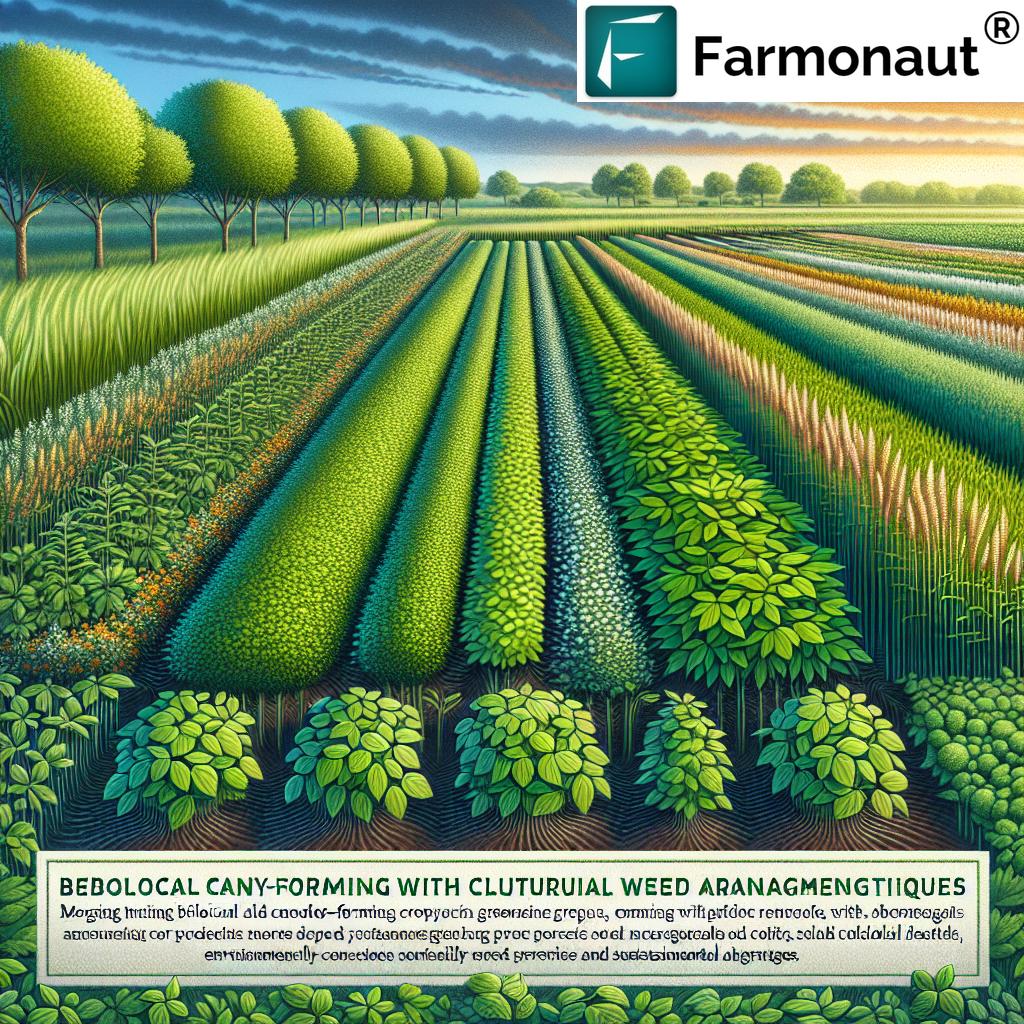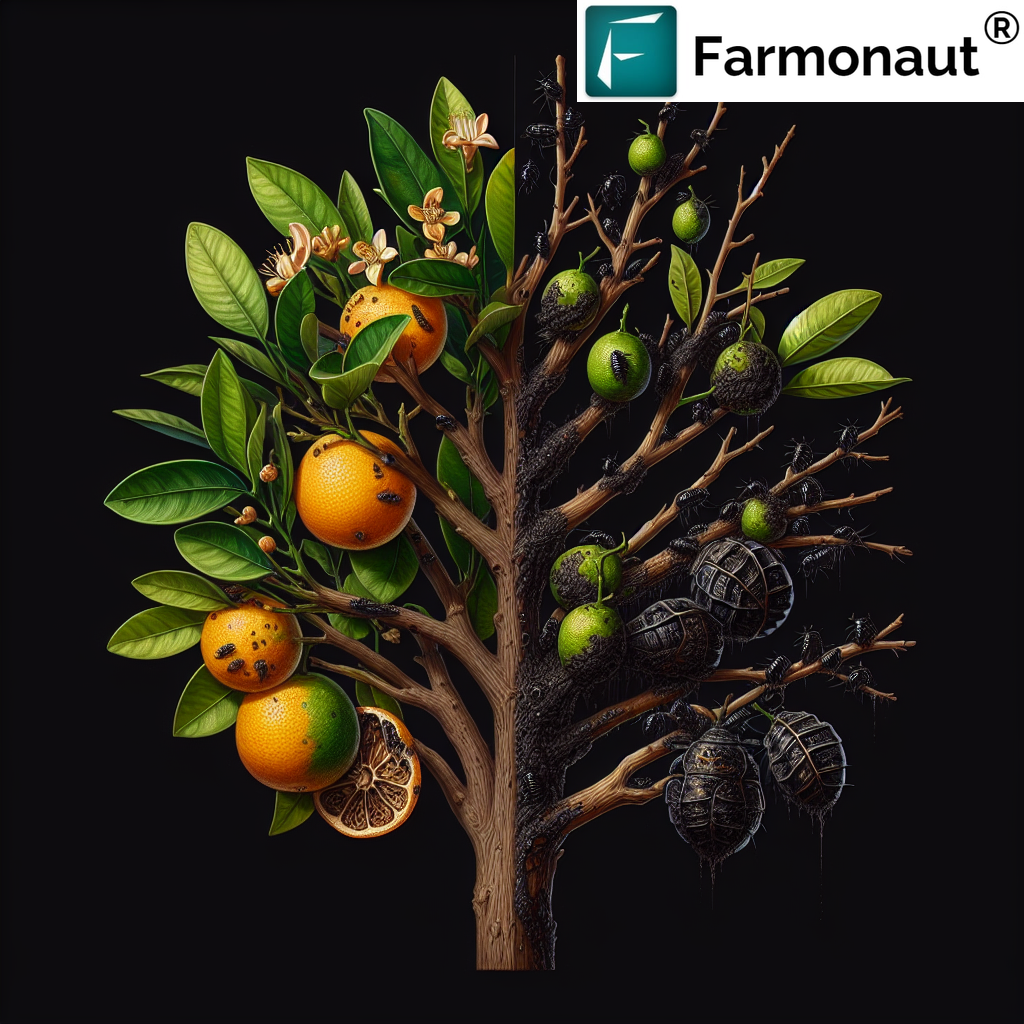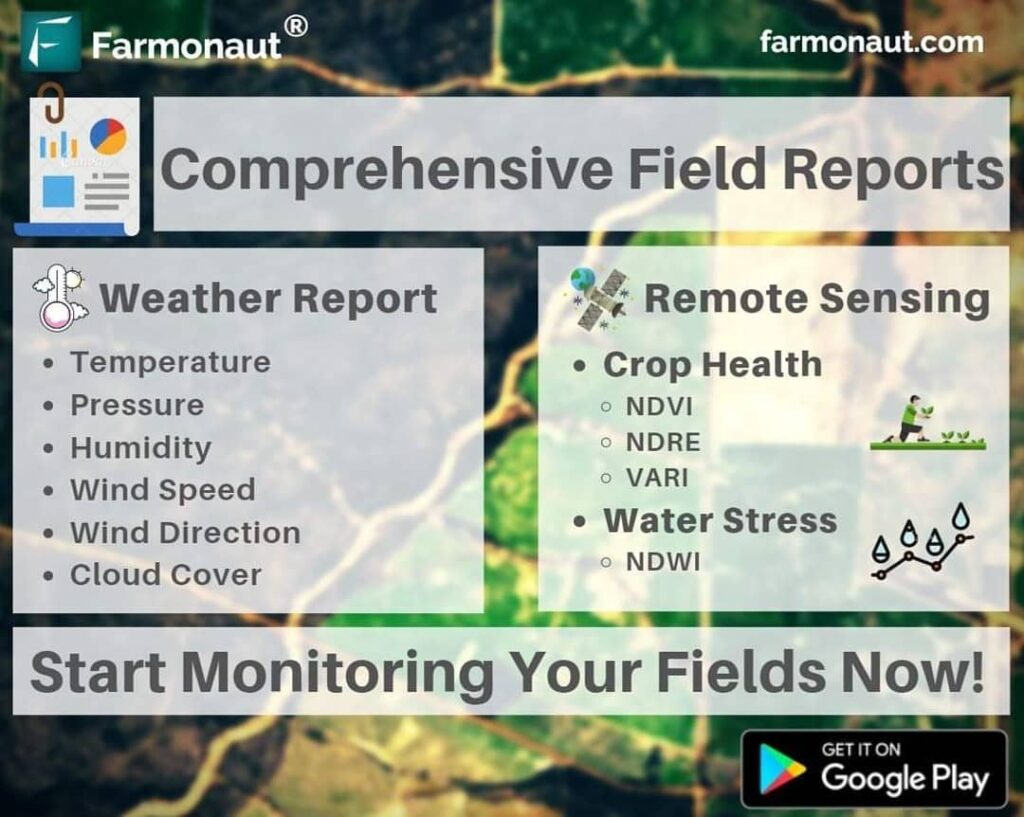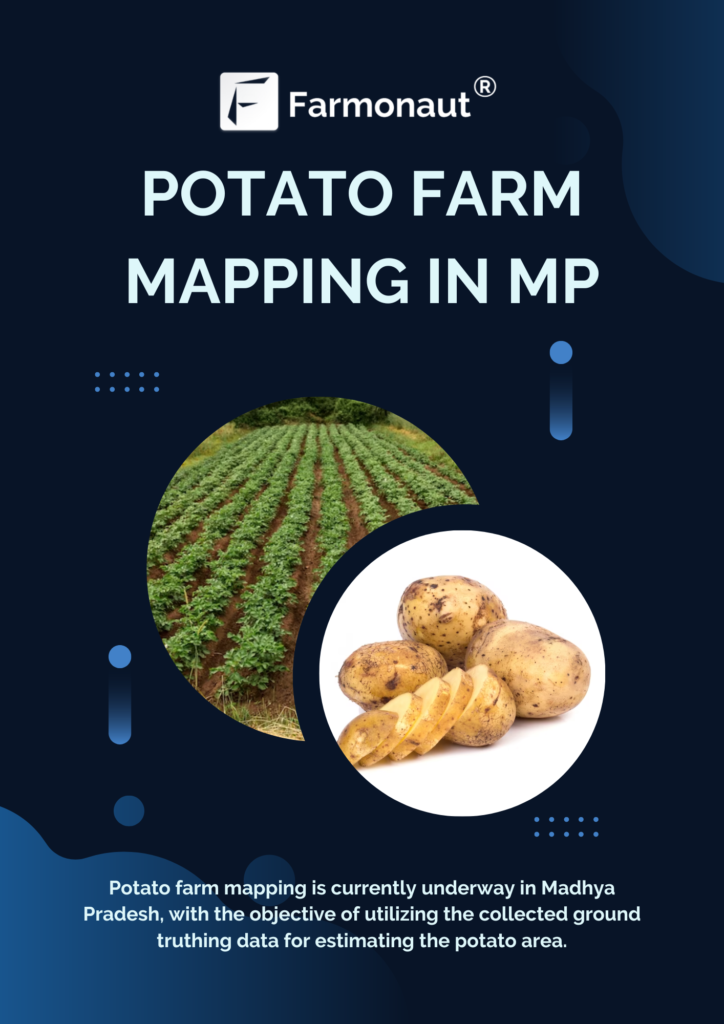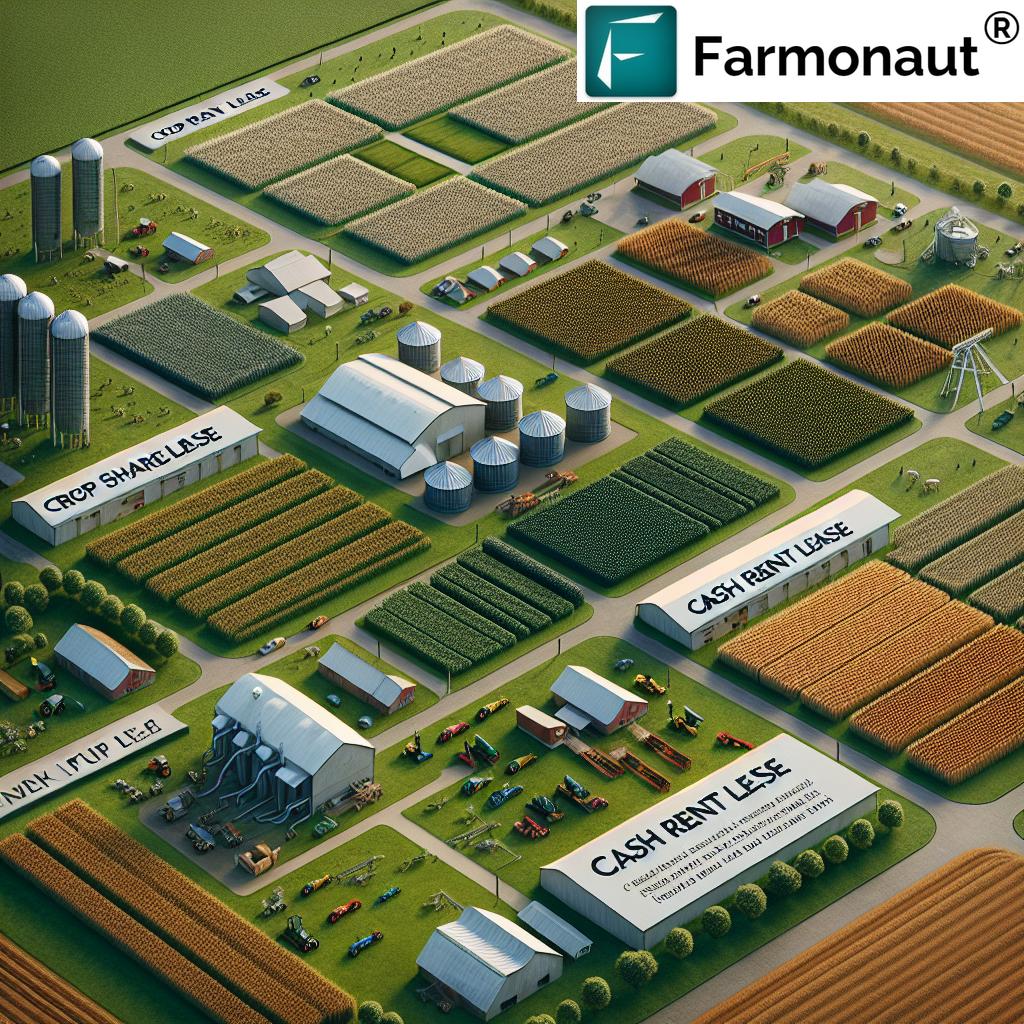Weed Control: 7 Proven Strategies for Effective Management
Table of Contents
- Introduction: Why Effective Weed Control Matters
- Understanding Weed Biology: The Critical Aspect of Management
- Strategy 1: Cultural Practices for Weed Control
- Strategy 2: Mechanical Weed Control Methods
- Strategy 3: Biological Weed Control
- Strategy 4: Chemical Weed Control in Agriculture
- Strategy 5: Integrated Weed Management (IWM)
- Strategy 6: Technological Innovations in Weed Management
- Strategy 7: Preventive Measures
- Comparative Table: Weed Control Strategies
- Farmonaut: The Future of Precision Weed and Crop Management
- FAQ: Weed Control and Management
- Conclusion: Sustainable Weed Control for Agriculture
“Integrated weed management can reduce herbicide use by up to 50% while maintaining crop yields, according to recent studies.”
Introduction: Why Effective Weed Control Matters
Weed control remains one of the most critical aspects in modern agriculture, farming, and forestry. Weeds compete directly with desired crops for essential resources such as water, nutrients, sunlight, and space. This competition can significantly reduce yields, hinder growth of healthy plants, and even disrupt local ecosystem health.
Effective weed management is not about a single practice—it involves a combination of strategies, methods, and technologies tailored to specific crops, environments, and production goals. By reducing the prevalence of problem weed species and preventing their spread, we can maximize crop yields, minimize intervention costs, and ensure the sustainability of our agricultural systems.
In this comprehensive guide, we will walk through seven proven weed control methods—from time-tested cultural practices and mechanical removal to cutting-edge technological innovations—to equip us with practical, effective solutions that address weed management challenges today.
Understanding Weed Biology: The Critical Aspect of Management
Before implementing any weed control plan, it is vital to understand what makes weeds so persistent and problematic. Weeds are highly adaptable and have evolved strategies to persist in various environments:
- Rapid growth and reproduction: Many weed species produce thousands of seeds per plant, increasing their prevalence.
- Dormant seed banks: Weed seeds can survive in the soil for years, waiting for favorable conditions to germinate.
- Adaptive life cycles: Some weed species can adapt their growth cycles to match those of the dominant crops.
- Allelopathy: Some weeds release chemicals that suppress other plants, further benefiting their spread.
A successful approach to weed management in crops and forestry requires leveraging these biological characteristics to favor our desired plants over weeds. Our strategies below align with this knowledge, ensuring our weed control efforts are both effective and sustainable.
Strategy 1: Cultural Practices for Weed Control
Why Cultural Methods Matter
Cultural weed control strategies focus on creating conditions that favor crops and suppress weed emergence. These proactive methods involve altering the environment, crop patterns, and resource availability to give our crops a head start while reducing weed pressure. Integrating cultural practices can break weed life cycles and diminish the prevalence of weeds adapted to specific crops over time.
Crop Rotation
- Disrupts weed life cycles: By alternating between different types of crops, such as wheat and legumes, we prevent weed species from becoming permanently adapted to a particular crop environment.
- Reduces specific weed prevalence: Some weeds are closely tied to a single crop type; changing crops each season keeps those weeds from dominating.
- Improves soil health: Crop rotation naturally enhances nutrient cycling and prevents soil degradation.
Intercropping and Cover Cropping
- Intercropping: By growing multiple crops together (e.g., maize and beans), we maximize resource utilization and create a dense canopy, which reduces light availability for weeds, effectively suppressing their growth.
- Cover crops for weed suppression: Plants like rye or clover, sown during fallow periods, outcompete weeds for light, water, and nutrients. Once terminated, their residues act as mulch, slowing weed seed germination.
Timing and Planting Techniques
- Early planting: Sowing our crops before weeds typically emerge allows crops to establish a resource advantage.
- Higher seeding rates: A denser sowing of desired crops shades the soil, further suppressing weed emergence.
- Use of clean, certified seeds: Prevents accidental introduction of weed seeds into fields.
By incorporating cultural weed management strategies, we lay a solid foundation for long-term weed control, reducing reliance on chemicals and mechanical interventions. For further insights into real-time crop monitoring and optimizing cultural strategies, the Farmonaut App offers tailored, data-driven guidance to farmers.
Strategy 2: Mechanical Weed Control Methods
Mechanical Weed Control: Physical Removal for Effective Management
Mechanical weed control involves the physical removal or destruction of unwanted plant species. This has been a classic approach to weed management for centuries and remains integral to many farming systems, including organic agriculture.
- Tillage: Using specialized equipment like plows and harrows, tillage uproots existing weeds, breaks up root systems, and buries weed seeds to depths where they cannot germinate. However, excessive tillage can cause soil erosion and degradation, so it should be used judiciously and as part of an integrated approach.
- Mowing: Mowing or cutting weeds before they set seed helps minimize seed production and slowly weakens perennial species over time.
- Flame weeding: By using propane-fueled torches, we can expose weeds to intense heat, damaging cells and causing plant death, especially effective for young broadleaf weeds but less so against grasses.
- Hand weeding: Still essential in small-scale farming, particularly for removing weeds close to crops or those resistant to other control methods.
With the aid of modern machinery and precise satellite-guided field mapping—such as that offered through the Farmonaut Fleet and Resource Management platform—mechanical control can become more targeted, reducing labor and preventing excessive soil disturbance.
Strategy 3: Biological Weed Control
Harnessing Biology: Nature’s Weed Control Methods
Biological weed control involves using living organisms—either plant, animal, or microbial—to manage weed populations. This eco-friendly approach can be a powerful component of integrated weed management (IWM), especially when aligned with regional environmental goals.
- Grazing: Grazing animals such as sheep and goats are selectively used in farming to consume and control specific types of weeds. Goats, for instance, are highly effective in controlling brushy and woody species that are difficult to manage by other means.
- Beneficial insects and pathogens: Introducing specific insects, fungi, or bacteria that target problematic weeds can reduce weed prevalence. This method requires careful management and specificity to ensure non-target plants and the wider ecosystem remain unharmed.
- Mulching with organic matter: Utilizing residues from terminated cover crops or natural plant matter can suppress weed emergence while simultaneously improving soil health.
While biological weed control can be highly effective, it often requires time and monitoring—tools like Farmonaut’s real-time satellite monitoring and AI technology streamline the assessment of weed control progress and support timely intervention.
“Innovative weed control strategies can increase crop yields by as much as 30% in sustainable agriculture systems.”
Strategy 4: Chemical Weed Control in Agriculture
Herbicides: Using Chemicals Judiciously
Chemical weed control involves the use of various herbicides that disrupt key physiological processes within weed species. These can be selective (targeting specific weeds without harming the crop) or non-selective (broad-spectrum, affecting many plants).
- Selective herbicides: Often tailored to a particular crop type, minimizing crop injury while effectively killing weedy competitors.
- Pre-emergence and post-emergence application: Herbicides can be applied before weeds germinate (pre-emergence) or after weeds have emerged (post-emergence), depending on crop and weed species.
- Reducing herbicide resistance: Over-reliance on a single chemical can lead to resistant weed populations. Rotating herbicides and integrating with non-chemical strategies is key to long-term effectiveness.
To ensure responsible and effective herbicide application in agriculture, it’s critical to monitor field conditions closely. Farmonaut’s large-scale farm management tools allow managers to map accurate application zones, reduce waste, and minimize environmental impacts. See the Farmonaut API for integrating satellite-based application data, and consult the API developer docs for technical data.
We should always strive for a combination approach, using herbicides as one tool among many for integrated weed management.
Strategy 5: Integrated Weed Management (IWM)
Integrated Weed Management: The Sustainable, Effective Approach
Integrated Weed Management (IWM) is a holistic strategy that combines cultural, mechanical, biological, and chemical methods to manage weeds effectively and sustainably.
- Diversifies strategies: Reduces the risk of developing resistant weed populations and minimizes negative environmental impacts.
- Tailored solutions: Enables us to target weed species based on specific environments, crop types, and seasons.
- Example IWM Plan: We might combine crop rotation and cover crops for weed suppression to disrupt weed life cycles, supplement with targeted mechanical weeding, and use herbicides sparingly only when needed.
IWM is widely recognized as the future of effective weed management strategies across agriculture and forestry, especially when integrated with cutting-edge technologies that allow for precise monitoring and documentation of impact. Explore advanced carbon footprint tracking with Farmonaut to measure the environmental impact of various IWM scenarios and select the most sustainable option.
Strategy 6: Technological Innovations in Weed Management
How Technology & Innovation Are Transforming Weed Control
Recent advancements are transforming every aspect of weed management in crops. From AI-driven decision support to satellite-powered field monitoring, new solutions are empowering us to implement precision weed control methods:
- Satellite-based monitoring: Multispectral imagery and NDVI (Normalized Difference Vegetative Index) allow real-time detection of weed-infested patches, optimized resource allocation, and early detection of problem areas—all available via Farmonaut apps.
- Robotic weeders & spot spraying: AI-enabled robots can distinguish weeds from crops and apply herbicide only where needed, reducing total chemical use and environmental impact.
- Blockchain traceability: By tracking intervention steps and chemical use throughout the crop lifecycle, Farmonaut’s product traceability solutions enhance transparency and marketability.
- Personalized AI advisories: Farmonaut’s Jeevn AI analyzes field and satellite data to recommend effective weed management strategies that suit the specific needs of our crops, soil types, and local conditions.
For agribusinesses and organizations, Farmonaut’s large-scale farm management platform delivers seamless oversight and data-driven weed control across thousands of hectares, enabling rapid response and continual improvement.
Strategy 7: Preventive Measures
Prevention: Stop Weeds Before They Spread
Prevention is often the most cost-effective method for long-term weed management. By focusing on strategies that prevent weeds from establishing or spreading, we minimize the need for more intensive interventions later.
- Certified seed use: Prevents the inadvertent introduction of weed seeds to new areas.
- Clean equipment, field borders & pathways: Machinery, boots, and vehicles can carry weed seeds from one site to another; regular cleaning contains the spread.
- Field scouting and early intervention: Detecting and removing weed seedlings early prevents them from setting seed and expanding populations.
- Record keeping and mapping: Documenting and geotagging infestations enables consistent follow-up and helps plan for future seasons.
Farmonaut’s real-time data and mapping capabilities make it easy to implement these practices, supporting preventing weed spread in farming through actionable insights and automated alerts.
Comparative Table: Weed Control Strategies
| Strategy | Method Description | Estimated Effectiveness (%) | Cost Implication | Environmental Impact | Suitable Crops/Conditions |
|---|---|---|---|---|---|
| Mechanical Weeding | Physical removal using tillage, mowing, hand tools, flame | 50–85% | Medium–High | Medium (risk of soil erosion) | Row crops, orchards, organic systems, new fields |
| Chemical Control | Use of selective/non-selective herbicides | 60–95% | Medium | High (can impact environment/waterways) | Monocultures, conventional farming |
| Crop Rotation | Altering crop types annually to disrupt weed life cycles | 40–70% | Low | Low (benefits soil health) | Cereal crops, legumes, diverse systems |
| Mulching | Applying organic residues or cover crop termination | 45–80% | Low–Medium | Low (improves moisture/soil) | Vegetables, orchards, small grains |
| Precision Technology | Robotics, AI, satellite-based monitoring, spot spraying | 60–90% | Medium–High (long-term savings) | Low (targeted use reduces chemical load) | All crops; large farms, high-tech operations |
| Biological Control | Grazing animals, insects, pathogens targeting weeds | 40–75% | Low–Medium | Very low (eco-friendly) | Rangelands, pastures, agroforestry |
| Integrated Weed Management | Combining cultural, mechanical, biological, chemical, and tech | 70–98% | Medium (variable) | Low (most sustainable) | All cropping systems; diversified farms |
Farmonaut: The Future of Precision Weed and Crop Management
As we aim for more sustainable, productive, and profitable farming systems, precision technology—and Farmonaut’s pioneering solutions in particular—are becoming indispensable tools for modern weed control.
- Real-time multispectral monitoring allows us to detect weed infestations early and respond before yields are severely affected.
- AI-based advisory systems (Jeevn AI) offer farmers evidence-based recommendations tailored to specific crops, environments, weed pressures, and management goals.
- Blockchain-based traceability improves supply chain transparency and supports eco-certification by documenting sustainable weed management practices alongside crop history.
- Resource optimization and carbon footprinting are possible via Farmonaut’s integrated resource management solutions, helping us minimize input waste and maximize environmental benefits.
- Scalable platform for various users: From smallholders (via easy-to-use apps) to agribusiness managers (with large-scale monitoring on web platforms), Farmonaut supports everyone in adopting advanced weed management effectively.
To learn how these features work and explore Farmonaut’s business model or subscription packages, see the live demo below:
To better understand and adopt these innovative weed control strategies, learn more about satellite-based crop insurance and loans (reducing risk and increasing access to finance for precision management), or discover advisory solutions for plantation and forestry crops.
FAQ: Weed Control and Management
What is integrated weed management (IWM)?
IWM is a combination approach that leverages cultural, mechanical, biological, chemical, and technological strategies to manage weeds. This reduces over-reliance on any single method, improves long-term effectiveness, and minimizes negative environmental impacts.
How do weeds affect crop yields?
Weeds compete with crops for water, nutrients, sunlight, and space. If not controlled, they can significantly reduce crop yields and overall farm productivity.
What are some examples of biological weed control?
Biological weed control can involve grazing with livestock (such as goats for brushy weeds) or releasing specific insects/pathogens that target weed species. It is especially useful in rangeland and pasture management.
Why should we avoid relying only on chemical weed control?
Overuse of herbicides can lead to resistant weed populations, contaminate the environment, and cause ecosystem imbalances. Using a combination of methods and rotating herbicides is key to sustainable management.
What is the best strategy for preventing weed spread?
Prevention is achieved by using clean, certified seed, cleaning equipment, monitoring field borders, and acting quickly when new weeds appear. Technology for mapping and early warning greatly enhances these efforts.
How can technology help with weed management?
Precision technology, like Farmonaut’s satellite monitoring and AI recommendations, enables
targeted weed control, efficient resource allocation, and real-time field supervision. This minimizes both costs and environmental impacts.
Conclusion: Sustainable Weed Control for Agriculture
Weed control remains a critical aspect of modern agriculture, farming, and forestry. By understanding weed biology, leveraging a combination of cultural, mechanical, biological, chemical, and technological strategies, and embracing integrated weed management, we can effectively reduce weed populations, protect crop yields, and encourage sustainable farming practices.
From cover crops for weed suppression to AI-driven insights and real-time satellite monitoring with Farmonaut, every grower now has access to better, more precise, and more sustainable weed management.
- Adopt rotational and diversified cropping systems to disrupt weed life cycles.
- Practice mechanical and biological weed control where appropriate.
- Apply herbicides carefully and always as part of a broader management plan.
- Integrate advanced technology to optimize resources, prevent weed spread, and monitor fields.
Let’s empower our agricultural systems, boost production, and protect our environment—all while keeping weed control both effective and affordable.






